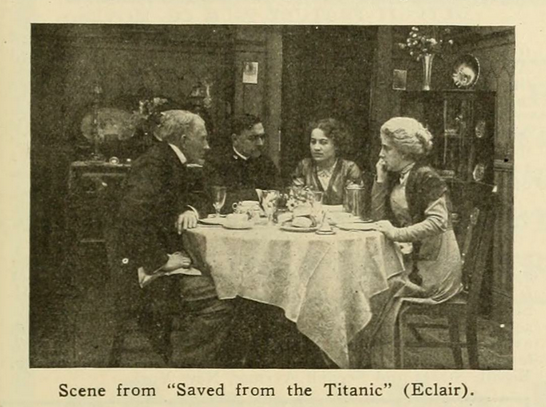Trav S.D.’s book offers yet another look at the world of silent cinema -- he explores the roots and history of this beast known as comedy itself, how it manifested itself on nitrate and how it has evolved into the bread and butter of sites like YouTube. In addition to an in-depth look at the vaudeville and stage comedians who came before, and an even-handed look at the famous and lesser-known silent film comedians of the time, he offers, perhaps, a more balanced and less cynical look at the body of work offered by silent stars after their heyday was well behind them.
Milla Davenport, Mabel Normand, Harry McCoy & Roscoe Arbuckle in a Keystone comedy
“Chain of Fools” is obviously written by a true lover of the form who is versed in the standard literature on the subject (notably Walter Kerr’s “The Silent Clowns”), and it's worth noting that Trav himself has paid homage to the form by writing and starring in his own silent shorts. The love for the genre comes through with every word, as does his dedication to set the record straight on some misconceptions.
Mabel Normand and Mack Sennett with Keystone players
Trav also traces the final days of slapstick and the strains of it that continue through to current comedians. Although his opinions of certain comedians are sure to rub some readers the wrong way (his opinion of Abbott and Costello is justifiably low) the honesty he approaches the subject with is refreshing. While some are taken down a peg, others are finally given their due. Mabel Normand and her fellow pioneering comediennes get their moment in the spotlight, as do Charley Chase and others. He also gives credit to heirs of the silent comedy throne, comedians like Red Skelton, Jackie Gleason and Chris Farley who directly or indirectly, found inspiration in the form and have kept it going.
Intrigued? You can buy “Chain of Fools” through Amazon either as a paperback or an ebook for the Kindle.



















